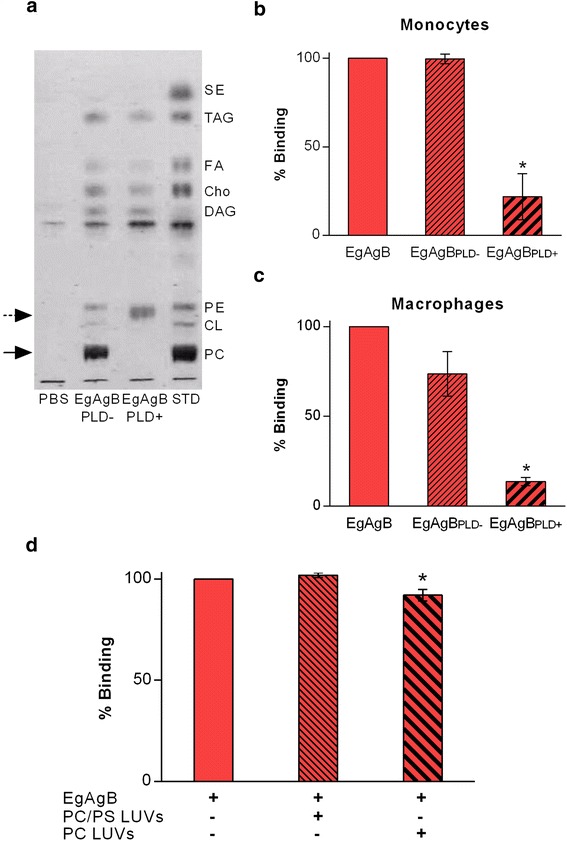Fig. 5.

Contribution of phospholipid moiety in EgAgB binding to monocytes and macrophages. EgAgB was treated with PLD to remove the polar head group from phospholipids. a HPTLC analysis of the lipid fractions extracted from EgAgBPLD- and EgAgBPLD+. Lipid bands were visualised using iodine vapour and identified by comparison with the standards (STD). The solid arrow indicates the band corresponding to phosphatidylcholine, whereas the dotted arrow indicates the band corresponding to phosphatidic acid. (b), (c) Binding of EgAgBPLD- and EgAgBPLD+ to monocytes and macrophages, respectively. Binding was detected employing EB7 mab followed by incubation with anti-IgG/IgM-FITC. Results are expressed as percentage of binding (% binding), where 100 % corresponds to the binding of native EgAgB without any treatment. Data are expressed as mean ± SEM of three independent experiments. Asterisks (*) indicate significant differences with respect to the control (EgAgBPLD-) according to one-way ANOVA analysis followed by Dunnett’s post-test (p < 0.05). d Competition binding assays employing PC-LUVs and PC/PS-LUVs. Results are expressed as percentage of binding (% binding), where 100 % corresponds to the binding of native EgAgB in the absence of LUVs. Data are expressed as mean ± SEM of three independent experiments. Asterisks (*) indicate significant differences with respect to the 100 % of binding (without LUVs.) in accordance with one-way ANOVA analysis followed by Dunnett’s post-test (p < 0.05). Abbreviations: Cho (cholesterol); FA (free fatty acids); DAG (diacylglycerols); SE (sterol esters); TAG (triacylglycerols); PC (phosphatidylcholine); CL (cardiolipin) and PE (phsophatidylethanolamine)
